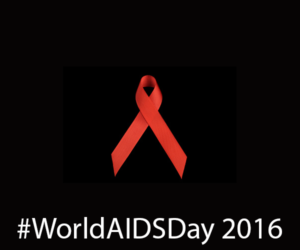Getting One Step Closer to Reducing HIV Stigma #WorldAIDSDay 2016
Each year on December 1, we are reminded of the successes of the past and the work still needed in reducing new HIV infections and creating a better future for those already infected with HIV.
 As many countries began the process of rolling out the World Health Organization’s (WHO) Antiretroviral Therapy (ART) guidelines for test and start, and enrolling those who test positive for HIV on treatment as soon as possible, the need for health communication has never been more apparent. New and improved counseling and education plays a critical role in the roll out in order for people to understand the benefits of starting treatment immediately, where previously many who were already diagnosed have been told they do not yet need treatment. Countries have recognized these challenges and in Swaziland, the Health Communication Capacity Collaborative (HC3) has been working in partnership with the Ministry of Health to develop a national test and start communication strategy to accompany the roll out. Through this communication strategy, messages have been developed for providers in facilities as well as community health workers, for patients who already know their status but have not yet started ART, and those who may not yet know their status. Along with counseling, messages to the general public and families of those diagnosed will increase understanding and acceptance of treatment and the benefits to individuals and communities of supporting those who are on ART.
As many countries began the process of rolling out the World Health Organization’s (WHO) Antiretroviral Therapy (ART) guidelines for test and start, and enrolling those who test positive for HIV on treatment as soon as possible, the need for health communication has never been more apparent. New and improved counseling and education plays a critical role in the roll out in order for people to understand the benefits of starting treatment immediately, where previously many who were already diagnosed have been told they do not yet need treatment. Countries have recognized these challenges and in Swaziland, the Health Communication Capacity Collaborative (HC3) has been working in partnership with the Ministry of Health to develop a national test and start communication strategy to accompany the roll out. Through this communication strategy, messages have been developed for providers in facilities as well as community health workers, for patients who already know their status but have not yet started ART, and those who may not yet know their status. Along with counseling, messages to the general public and families of those diagnosed will increase understanding and acceptance of treatment and the benefits to individuals and communities of supporting those who are on ART.
There are lessons to be learned from other health conditions as well for a smooth transition to test and start.
The first example that comes to mind is high blood pressure. People around the world who have high blood pressure have been counseled and educated to take medication daily in order to stay healthy. Even though they may not show any outwards symptoms, they know that it will help them to lead a longer productive life.
I also have hopes that test and start has the potential to reduce stigma further as well as improving individual’s physical health. With the shift towards treatment in the early stages of infection (before people are symptomatic) it takes us one more step towards HIV being seen and treated as a chronic illness rather than something that is shunned or stigmatized. There is no doubt we still have a long way to go, with stories of stigma and discrimination in nearly every community, but there is a lot to be said for the progress and changes made to date.
This World AIDS Day, I hope you take some time to think both about the past as well as the future and think about the over 36 million people living with HIV around the world and the 35 million who have died to date. As test and start rolls out, let us continue to use strategic health communication to highlight the benefits of treatment and its ability to prevent new infections.







Leave a Reply
Want to join the discussion?Feel free to contribute!